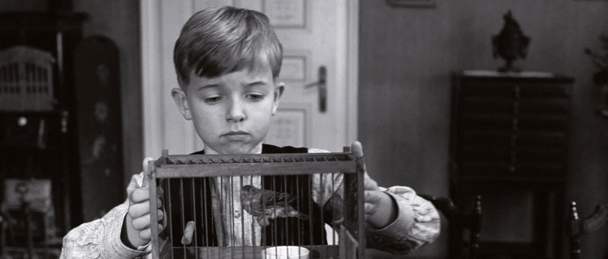
Found in translation

I started working as a translator for German-speaking filmmakers in 1991. At the time I was working freelance with the Goethe-Institut, helping to programme film seasons and produce programme notes. I was writing a PhD on the filmmakers Jean-Marie Straub and Danièle Huillet and when they were invited over I was invited to translate for them. They were very friendly and supportive, and as the event went smoothly I got asked again, first by the Goethe-Institut, then the BFI and London Film Festival and through them distributors (in particular Tartan-Metro and Artificial Eye). So I just slipped into it, and, what’s more, there isn’t much competition!
German is a subject in decline at universities and there aren’t many of us teaching German film history who can also speak the language fluently. The art house filmmakers I translate for always prefer someone who knows a bit about their work, film history and so on. As well as Michael Haneke I’ve worked for Edgar Reitz, Alexander Kluge, Ulrich Seidl, Christian Petzold, East German documentary filmmakers and many others at festivals and one-off screenings. These days all young German and Austrian filmmakers speak English, so there’s less demand. It’s now only the older generation (and those who learnt Russian rather than English in the GDR) who need translation these days. I only do this kind of thing a few times a year. My main job is teaching German and Film Studies.
Translating in this way involves usually seeing the film in advance, catching up on earlier films and then translating for one-to-one interviews, press conferences, discussions and Q&As. There are usually also informal discussions and, of course, a few complaints about hotels, film projection and the like.
The most interesting thing I have learnt from Michael is following a filmmaker who is so consistent in his style, themes, ideas and opinions. Although he has evolved stylistically – and the new film is certainly innovative in its use of black and white, digital post-production and cinematography – his films form an astonishingly coherent body of work on a clear set of ideas, character constellations and obsessions. Family, education, children, cruelty, fanaticism and indoctrination, social alienation, cowardice, prejudice – these classic auteurist themes recur in new combinations with each new film. The new one is particularly interesting for me because it is a historical film and because it introduces a broader spectrum of emotions than before.
The other thing you learn (also with Reitz and co.) is that filmmakers always need money and audiences and can never stop selling either the last film or the next one.
What’s particularly enlightening is doing interview after interview in which each journalist in turn is surprised to find that Haneke is quite relaxed and has a real sense of humour. Perhaps also, this time round, hearing him talk about his childhood in Austria, which he describes as privileged. The fact that he didn’t have a deprived or difficult childhood seems to have disappointed some people!
The job makes you realise that most people still expect filmmakers/artists to be like their films. It is also interesting (or frustrating) as a film historian to see how few people ask about formal and stylistic issues. In the case of The White Ribbon the HD quality, the lighting, the tableaux that look like early twentieth century photographs, the film’s debt to Bergman, Bresson, Reitz, Straub/Huillet… these things don’t seem to be as interesting to interviewers as whether Haneke is a masochist and enjoys splatter horror movies!
The White Ribbon is at The Curzon Mayfair and cinemas nationwide now. To find out more information, click here.






COMMENTS